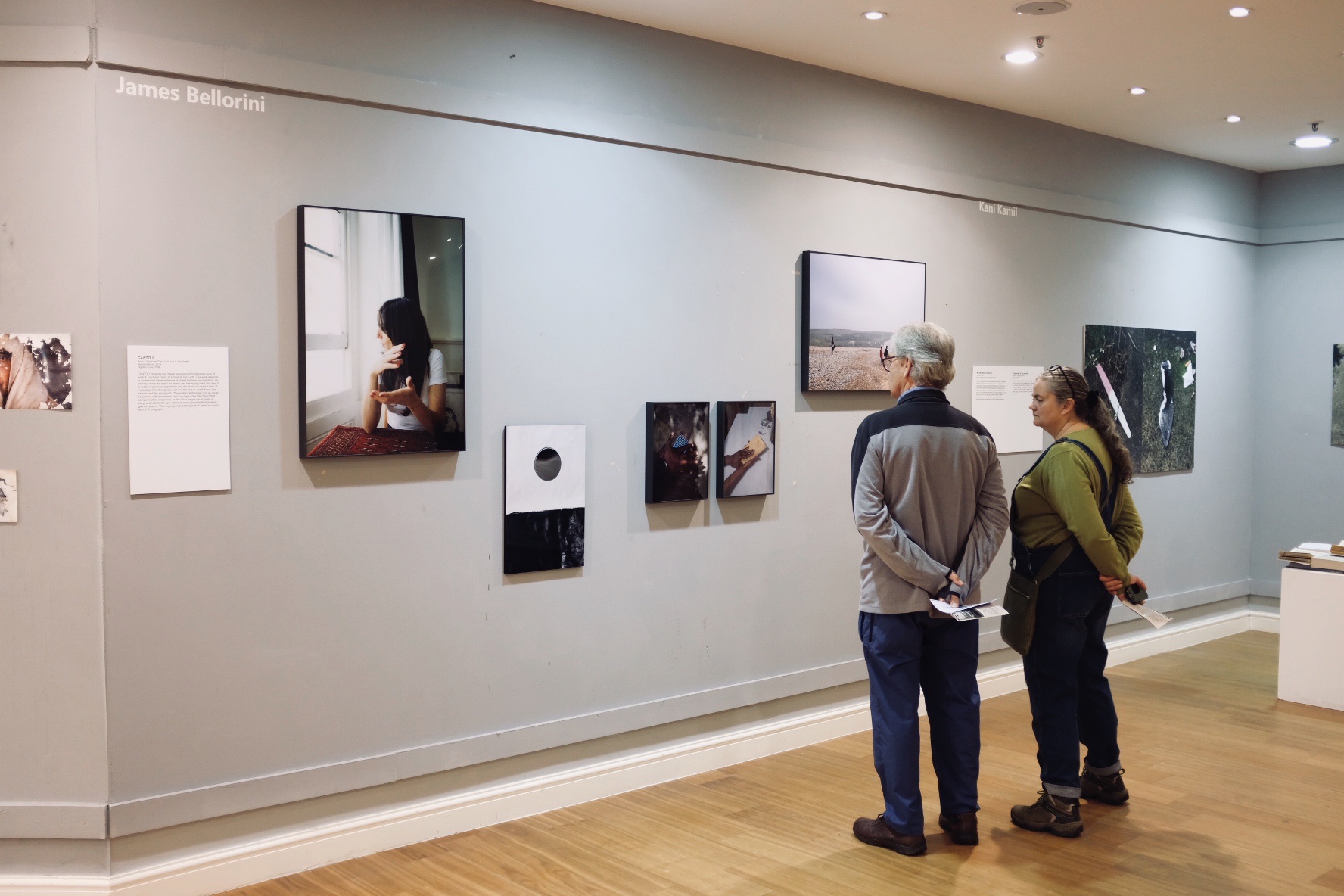MODULE 3: SUSTAINABLE PROSPECTS. WEEK 2.

Copyright James Bellorini 2019.
So yesterday I installed a very small part of my MA project for this year’s Hull International Photography Festival.
I’m really pleased with the work as it stands: just five images from the work I’ve done over the past two modules. They look good together and work as a physical sequence. They are also presented better than some of the work shown earlier in the year at HOME in Manchester and the V&A in London. Here they look more valued and substantial.
Overall, however, it’s been curious to note the lack of engagement with the work (and other work in the Festival) by the general public. From what I observed at the opening night, people are seduced by the more ‘gimmicky’ ideas presented, or work that is immediately accessible. That’s not to say the gimmicks are bad, I think this is more to do with people’s attention spans, or the visual overwhelm we are prey to in these times. Ambiguous work, or work with more subtlety or need for thought, doesn’t ‘hook’ people so readily. Or at least it didn’t here in Hull.
Or is the work not strong enough? Or too ‘difficult’ for people. Or is it a cultural thing?

Copyright James Bellorini 2019.
I also observed that interactive elements go down really well with an audience: something that makes them less passive and gets them involved with the work (or the ideas behind the work) in some way. Tactility and engagement. These might be useful things to consider moving forward into thinking about how my Final Major Project will be presented. Scrapbooks, interactive postcards etc, come to mind. It’s also something to bear in mind with regards to our current client brief assignment as part of this Module.
At this stage, the sample of work I am showing is small, too small to complete my intention of a long visual poem or song. Having said that, it really works for me as a sequence that’s for sure. Seeing it on the wall, I’m not sure if it’s the beginning or the end of the sequence, or potentially somewhere in the middle. That’s ok. Exciting actually, as it means I’m still holding creative options in my hand. The next stage of the process is to focus more on how I deepen the relevance of the mixed media work already present in the project, and whether that should be physical rather than photographic representations. So, for example, real mirrors rather than a photograph of a mirror as presented in this sequence. Photographic and physical artefacts might reinforce the sense of a ‘museum’ of belonging.

Copyright James Bellorini 2019.
On a practical level, I’m very happy with the prints and the framing of this work, especially the HD acrylic prints with the gunmetal box frames. They look and feel highly professional and give the images a real standout quality. to see how it goes ready to happens.
I hope it all gets more engagement. Maybe my expectations are too much on that front.

Copyright James Bellorini 2019.
On a (not unrelated) side note, it’s been interesting to note that here in Hull the current slew of government Brexit information signs, billboards, and electronic displays are absolutely everywhere. Whereas, in Brighton, they’re few and far between. Theres an obvious policy of pushing it hard in areas that supported the Leave vote than those that chose Remain. To me this is another signal that division is a powerful tool for governments, and makes me wonder who ‘owns’ our sense of belonging?
There’s a massive dichotomy here, because everybody I’ve met here in Hull is so friendly and welcoming. And yet at the same time, you know, there’s an undercurrent of this desire to separate in some way through the vote to Leave. I don’t know. It doesn’t make any sense to me, so welcoming and hospitable. And yet…
And theres evident poverty. There’s a massive population of homeless people here. It doesn’t make sense to me. But then, maybe the whole situation isn’t meant to make sense anymore? So, who really ‘owns’ or has a sense of belonging?
Finally, its interesting to note that if you’re not a drinker like me, then your networking opportunities at events like these goes down. People tend to stay up late, drinking with industry people, and I don’t do that becauseIdon’t drink any more. So how does that work? How do you network and make the important connections if you don’t drink?